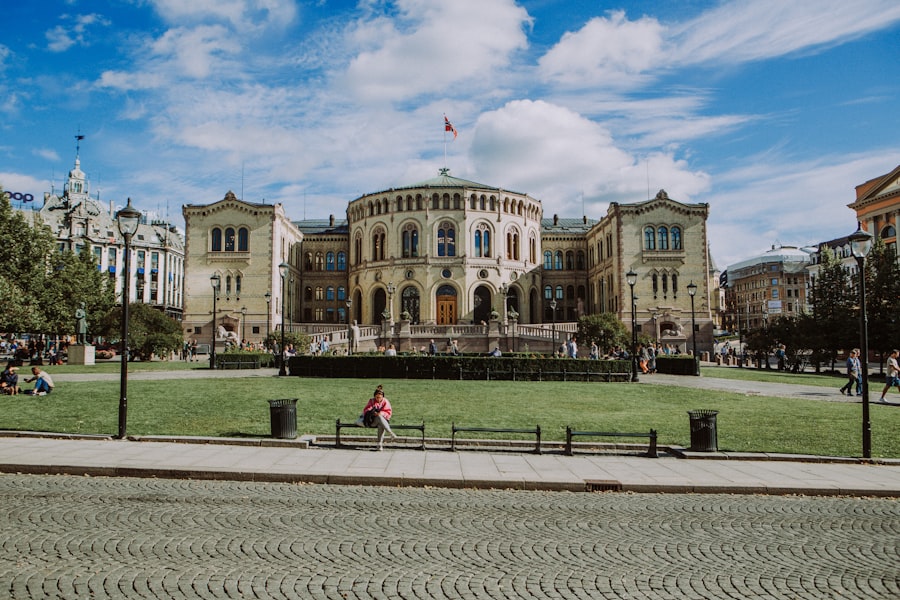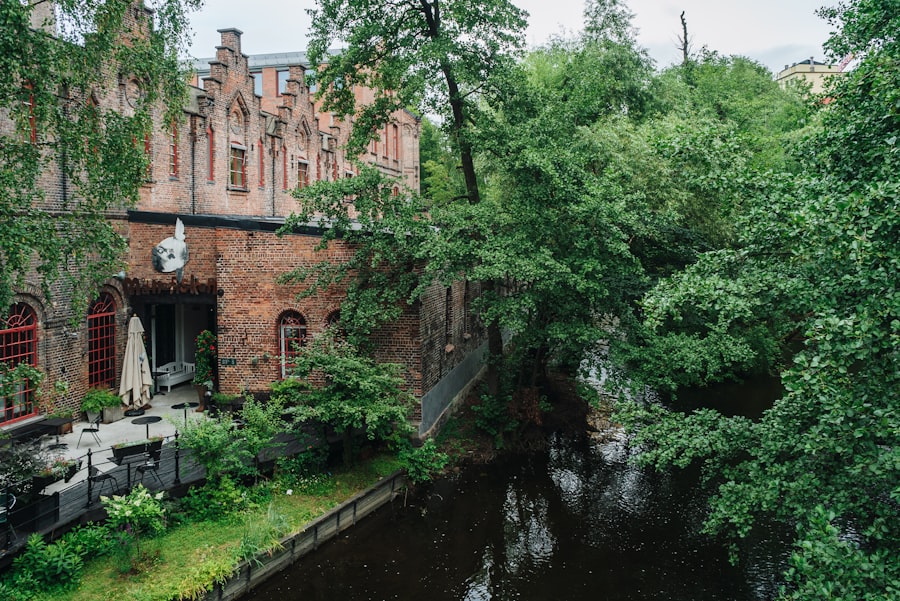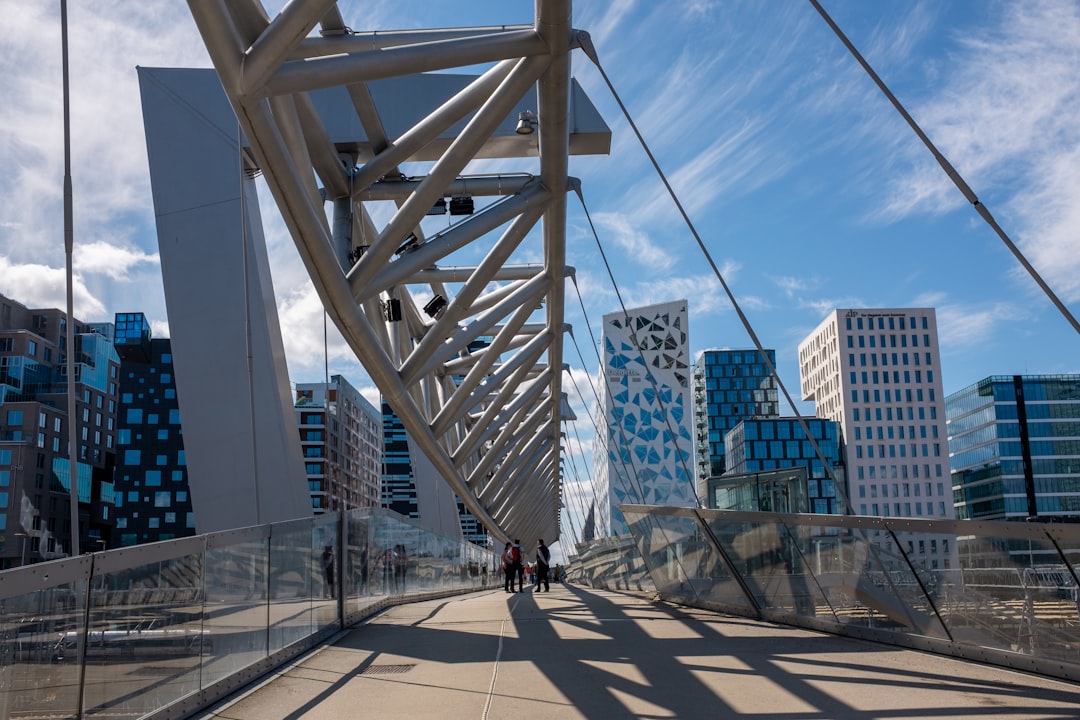Norwegian wedding traditions are a rich tapestry woven from centuries of history, culture, and regional customs. These traditions reflect the values and beliefs of the Norwegian people, showcasing their deep connection to nature, family, and community. Weddings in Norway are not merely a union of two individuals; they are a celebration of love that brings together families and friends, often steeped in rituals that have been passed down through generations.
From the engagement process to the post-wedding festivities, each aspect of a Norwegian wedding is imbued with meaning and significance. As Norway has evolved over the years, so too have its wedding traditions. While many couples still adhere to age-old customs, modern influences have begun to shape the way weddings are celebrated.
This blend of tradition and contemporary practices creates a unique atmosphere that reflects the personalities of the couple while honouring their heritage. In this article, we will explore various facets of Norwegian wedding traditions, from the engagement process to post-wedding celebrations, providing insight into what makes these ceremonies so special. Take the first step. Book a consultation with the Norway Relocation Group for your move to Norway.
Summary
- Norwegian wedding traditions are deeply rooted in history and culture, with many customs and rituals that have been passed down through generations.
- The engagement process in Norway often involves a formal proposal and the exchange of engagement rings, followed by a period of planning and preparation for the wedding.
- Traditional Norwegian wedding attire typically includes a bunad, a traditional Norwegian costume, for the bride and groom, as well as specific accessories and jewellery.
- Music and dance play a significant role in Norwegian weddings, with traditional folk music and dances often being performed to celebrate the occasion.
- Norwegian wedding ceremonies and customs may include unique rituals such as the exchanging of wedding crowns, the tying of the wedding knot, and the sharing of a wedding cake called kransekake.
The Engagement Process in Norway
The engagement process in Norway is often marked by a blend of romantic gestures and familial involvement. Traditionally, it begins with a proposal, where one partner expresses their desire to marry the other. This moment is typically intimate, often taking place in a picturesque setting that holds significance for the couple.
Following the proposal, it is customary for the couple to inform their families, as family approval plays a vital role in the engagement process. In many cases, the families will come together to celebrate this new chapter in the couple’s lives. Once engaged, couples may choose to host an engagement party, inviting close friends and family to share in their joy.
This gathering serves as an opportunity for both families to meet and bond, further solidifying the union. In some regions of Norway, it is customary for the bride-to-be to wear an engagement ring, which is often a simple yet elegant piece that reflects her personal style. The engagement period can vary in length, allowing couples ample time to plan their wedding while enjoying their newfound commitment.
Traditional Norwegian Wedding Attire

Traditional Norwegian wedding attire is a stunning reflection of the country’s cultural heritage. The bride typically wears a “bunad,” a traditional folk costume that varies by region and is often adorned with intricate embroidery and silver jewellery. Each bunad tells a story, representing the bride’s family background and regional identity.
The vibrant colours and detailed craftsmanship make these garments not only beautiful but also deeply meaningful. The groom’s attire is equally significant, often consisting of a tailored suit or a traditional folk costume that complements the bride’s bunad. In some regions, grooms may wear a “lusekofte,” a knitted sweater with distinctive patterns that showcase their heritage.
Accessories play an essential role in completing the look; for instance, brides may wear a floral crown or a silver tiara, while grooms might don a hat or decorative brooches. The emphasis on traditional attire highlights the importance of cultural identity in Norwegian weddings, allowing couples to celebrate their roots while embarking on their new journey together.
The Role of Music and Dance in Norwegian Weddings
Music and dance are integral components of Norwegian weddings, infusing celebrations with joy and energy. Traditional folk music often accompanies various stages of the wedding ceremony and reception, creating an atmosphere that resonates with cultural significance. Instruments such as the hardanger fiddle—a unique violin-like instrument—are commonly used to perform traditional tunes that evoke feelings of nostalgia and connection to heritage.
Dancing is another cherished aspect of Norwegian weddings, with couples and guests often participating in lively folk dances that encourage camaraderie and celebration. One popular dance is the “halling,” which involves energetic movements and acrobatics, showcasing the strength and agility of the dancers. These dances not only entertain but also serve as a means of bringing families together, fostering bonds between different generations as they join in the festivities.
Norwegian Wedding Ceremonies and Customs
Norwegian wedding ceremonies are typically held in churches or outdoor settings that hold special meaning for the couple. The ceremony itself is often steeped in tradition, featuring elements such as readings from scripture or poetry that resonate with the couple’s beliefs and values. A significant aspect of the ceremony is the exchange of vows and rings, symbolising the couple’s commitment to one another.
In addition to these formalities, various customs may be incorporated into the ceremony. For instance, it is common for couples to light a unity candle together, representing their shared future and commitment to one another. Another beautiful tradition involves the bride’s father giving her away during the ceremony, symbolising his blessing and support for her new life with her partner.
These customs create a sense of continuity with the past while allowing couples to express their individuality within the framework of tradition.
Traditional Norwegian Wedding Foods and Drinks

Food plays a central role in Norwegian wedding celebrations, with traditional dishes often taking centre stage at receptions. A typical wedding feast may include an array of local delicacies such as “lutefisk,” dried fish reconstituted in lye; “rakfisk,” fermented fish; and “klippfisk,” dried and salted cod. These dishes reflect Norway’s rich maritime heritage and are often accompanied by hearty sides like potatoes and root vegetables.
In addition to savoury dishes, desserts also hold a special place at Norwegian weddings. One popular treat is “kransekake,” a towering cake made from almond paste that is often decorated with icing and served at festive occasions. Couples may also offer guests traditional drinks such as “aquavit,” a flavoured spirit that is typically enjoyed during celebrations.
The emphasis on local cuisine not only showcases Norway’s culinary heritage but also fosters a sense of community as guests gather around shared meals.
Symbolism and Superstitions in Norwegian Weddings
Norwegian weddings are rich in symbolism and superstitions that reflect cultural beliefs about love, marriage, and good fortune. For instance, it is common for couples to incorporate specific symbols into their ceremonies or attire to ward off negative energies or attract good luck. One such symbol is the use of “brudekrans,” or bridal crowns made from flowers or greenery, which are believed to protect brides from evil spirits on their wedding day.
Superstitions also play a role in various aspects of wedding planning. For example, it is considered bad luck for couples to see each other before the ceremony; thus, many brides and grooms opt for separate preparations leading up to their nuptials. Additionally, some believe that rain on a wedding day signifies good fortune for the couple’s future together.
These beliefs add an intriguing layer of depth to Norwegian weddings, intertwining cultural heritage with personal significance.
Norwegian Wedding Decor and Floral Arrangements
Decorations at Norwegian weddings often reflect the natural beauty of the landscape, incorporating elements such as wildflowers, greenery, and rustic materials. Couples may choose to adorn their venues with floral arrangements that feature seasonal blooms native to Norway, creating an organic aesthetic that resonates with their surroundings. Common flowers include daisies, lilies of the valley, and heather—each carrying its own symbolism within Norwegian culture.
In addition to floral arrangements, other decorative elements may include candles, lanterns, and handmade crafts that showcase local artistry. Many couples opt for a minimalist approach that highlights the beauty of nature while allowing their love story to take centre stage. This emphasis on natural decor not only enhances the overall atmosphere but also reflects Norway’s deep connection to its stunning landscapes.
Traditional Norwegian Wedding Gifts and Favours
Gift-giving is an essential aspect of Norwegian weddings, with guests often presenting newlyweds with thoughtful tokens of love and support. Traditional gifts may include household items such as kitchenware or linens—practical gifts intended to help couples establish their new lives together. In some cases, guests may also contribute monetary gifts or vouchers that allow couples to choose items they truly desire.
Wedding favours are another delightful tradition in Norway, where couples express gratitude towards their guests for sharing in their special day. These favours can range from small tokens like handmade soaps or local delicacies to personalised keepsakes that reflect the couple’s journey together. By offering favours, couples create lasting memories for their guests while honouring their presence at the celebration.
Post-Wedding Traditions in Norway
Post-wedding traditions in Norway often involve continued celebrations with family and friends as couples embark on their new life together. One common practice is hosting a “brunch” or gathering shortly after the wedding day, allowing loved ones to come together once more to share stories and reminisce about the festivities. This gathering serves as an opportunity for couples to express their gratitude towards those who supported them throughout their journey.
Another cherished post-wedding tradition is the honeymoon—a time for couples to relax and enjoy each other’s company after the whirlwind of wedding planning and celebrations. Many Norwegian couples choose destinations that allow them to connect with nature or explore new cultures together. This time away not only strengthens their bond but also provides them with cherished memories as they begin their married life.
Modern Influences on Norwegian Wedding Traditions
As society evolves, so too do wedding traditions in Norway. Modern influences have begun to shape how couples approach their nuptials, leading to unique blends of traditional customs and contemporary practices. For instance, many couples now opt for personalised ceremonies that reflect their individual values and beliefs rather than strictly adhering to traditional formats.
Additionally, technology has played a significant role in modern weddings; social media platforms allow couples to share their experiences with friends and family who may be unable to attend in person. This digital age has also led to an increase in destination weddings as couples seek out picturesque locations both within Norway and abroad. Despite these modern influences, many couples still find joy in incorporating traditional elements into their celebrations—whether through attire, food choices, or customs passed down through generations.
This harmonious blend of old and new creates weddings that are not only reflective of personal style but also honouring cultural heritage. In conclusion, Norwegian wedding traditions encompass a wide array of customs that celebrate love while honouring cultural heritage. From engagement processes steeped in familial involvement to vibrant ceremonies filled with music and dance, each aspect contributes to creating memorable experiences for couples and their loved ones alike.
As modern influences continue to shape these traditions, they remain rooted in values that celebrate love’s enduring power—a testament to Norway’s rich cultural tapestry. For those looking to immerse themselves further into Norwegian culture—perhaps even considering marriage within this beautiful country—the NLS Norwegian Language School in Oslo offers comprehensive courses designed for all levels of learners. With expert instructors guiding students through language acquisition alongside cultural insights, participants can gain valuable skills that enhance their understanding of Norway’s rich traditions—making it an ideal choice for anyone wishing to embrace this enchanting culture fully.
Learn more about the Norwegian classes at the NLS Norwegian Language School in Oslo

